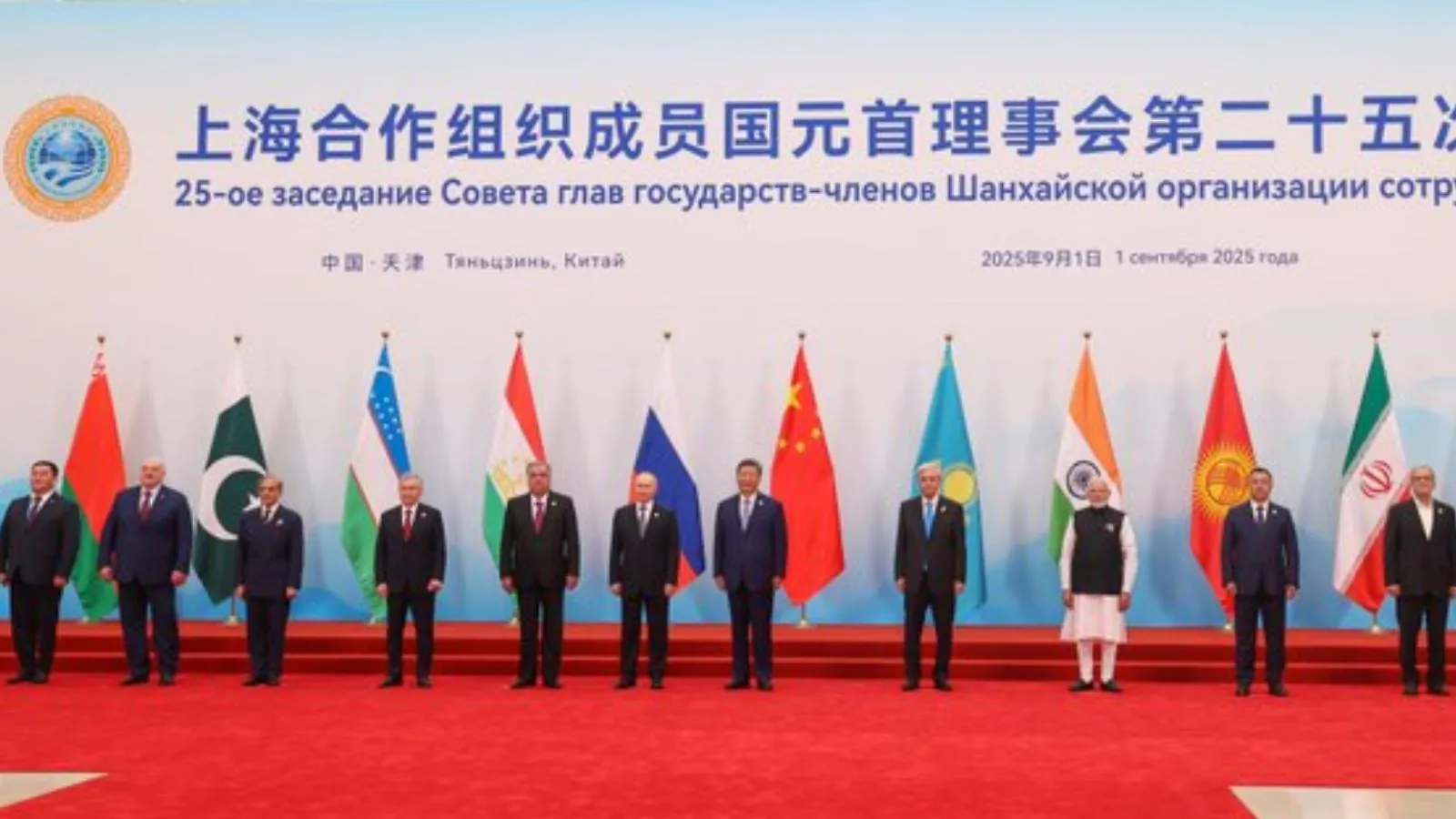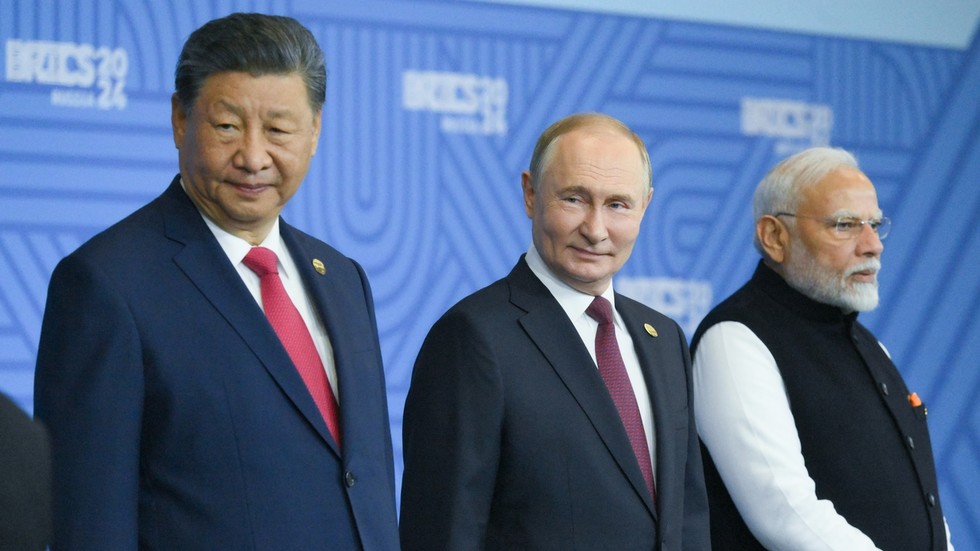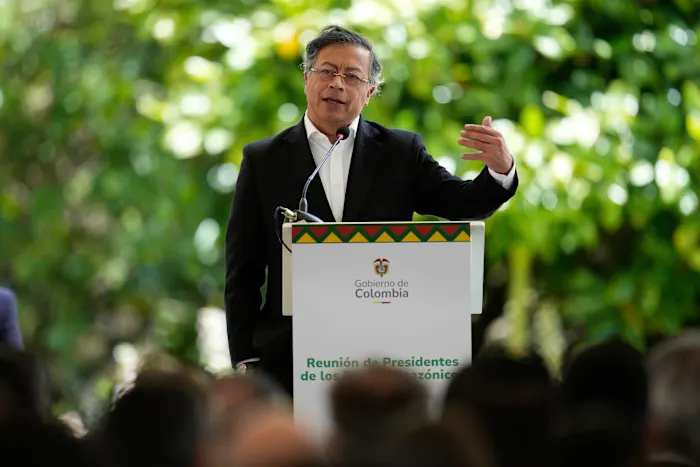By Aditi Bhaduri,News18
Copyright news18

The Tianjin Summit of the Shanghai Cooperation Organization (SCO), will go down in history as a watershed moment in global politics. It heralded a moment which expressly demonstrated that the western world no longer held imminence and power was shifting to the east. Though the SCO is a bloc that is still evolving, has the potential to reshape the global balance of power and this was most soundly manifested at Tianjin. And that is why, though at the core of this summit’s historicity and significance lies Prime Minister Narendra Modi’s visit to Tianjin, after seven long years, and participation in the summit amidst the backdrop of worsening Indo-US ties, the organization is more than that.
Beginning as what was billed as Eurasia’s response to the NATO, the SCO is no longer a symbolic regional alliance. Currently it represents nearly 40% of the world’s population and close to 30% of global GDP. Its ten full members — China, India, Russia, Pakistan, Iran, Kazakhstan, Kyrgyzstan, Tajikistan, Uzbekistan, and Belarus. There are 16 more partner states.
The SCO, as the name suggests, was formed in Shanghai in 2001, on the initiative of China and the Russian Federation, along with the Central Asian states of Kazakhstan, Kyrgyzstan, Tajikistan, Uzbekistan. It was meant to be a regional security bloc, for countries in the region coordinating and pooling resources to jointly battle terrorism, and transnational crimes like narcotics smuggling, human trafficking, and religious radicalism. The immediate reason was instability in Afghanistan which affected all these countries. The main reason, however, was to check Chinese expansion in Central Asia where five sovereign states appeared in the post-Soviet space, in Russia’s traditional sphere of influence. The SCO was a means to delineate the spheres of influence in Central Asia – while China could economically, Russia would retain control over defense and security in the region which it continues through the Collective Security Treaty Organisation (CSTO). Hence, Central Asia was central to the initiative, no pun intended.
When India joined the SCO in 2017, it was Russia that facilitated its entry into the organization in order to balance China’s heft there. Simultaneously, China facilitated Pakistan’s entry into the SCO the very same year. Though known as a Eurasian security bloc, the SCO, however, has no military alliance, and the only institution is the Regional Anti-Terrorism Structure (RATS) headquartered in Tashkent.
Hence, one of the primary reasons that India joined the SCO was to engage more closely with the Central Asian Republics (CARs) that were part of the SCO – Kazakhstan, Kyrgyzstan, Tajikistan, and Uzbekistan, actively encouraged by Russia. The SCO thus serves as a platform for annual meetings with these countries, with whom India has been trying to forge close ties. These countries represent an economic power bloc, with an abundance of natural resources, untapped manufacturing potential, and a united market. Strategically located, between Russia and China, and where China’s footprint is increasingly expanding, their importance has not been lost on India which for this reason initiated the India-Central Asia Dialogue. The first India-Central Asia Dialogue in 2022 was held virtually because of covid disruptions. The second summit has yet to take place though this year a Ministerial meet at the Foreign Ministers level did take place. However, India’s distraction with its G20 Presidency and Modi’s non-appearance at the summit last year in Astana was perceived by some of the countries as India’s non-interest in cultivating further ties with them.
The SCO summit thus provided a valuable platform for India and Prime Minister Modi to interact with his counterparts from these countries, allaying fears and rejuvenating ties.
The bloc, geographically compact as it is, is also important to combat the many threats that face the region – radicalism, jihadism, terrorism, drug and human trafficking. All the countries of the SCO have suffered from these threats and continue to wage sometimes overt and often covert battle against them. Hence, counter-terror coordination and cooperation becomes an important part of SCO activity.
This is particularly relevant now as the region is faced with the new spectre of the Islamic State- Khorasan Province (ISKP). Most of the SCO members have been impacted in some degree or the other by this terror group – Russia, Iran, Tajikistan, Uzbekistan, Kazakhstan, and India. For India in particular, a new threat is rising in the subcontinent in the form of the Hizb-ut-Tahrir in neighbouring Bangladesh. This is a terror threat that the CARs and Russia have already dealt with. (The organization is banned in all these countries). Hence, the SCO becomes imperative for a united approach to the threat of terror.
This approach was well reflected in the grouping’s declaration which condemned the Pahalgam massacre as well as the Jaffar Express attack in Pakistan.
A unified regional approach is equally true and needed in the case of Afghanistan too. As mentioned earlier, the chaos and instability in Afghanistan and the rise of the Taliban was the immediate raison d’être for the establishment of the SCO. Every founding member of the SCO had been detrimentally impacted by the Afghan jihad and ensuing instability in the country. Afghanistan under Taliban 2.0 still remains an issue for the region. All the SCO countries are on the same page regarding their approach to Taliban ruled Afghanistan. In direct contrast, the western world that was instrumental in bringing the Taliban to power in Kabul in 2021 has taken a rather contrarian position towards the country. Here again the SCO is a bridge to Afghanistan, as it was member Uzbekistan who in 2018 hosted an international conference on Afghanistan in Samarkand where the willingness of the US to have the then Ashraf Ghani-led government, together with the US announced officially that it would negotiate a peace deal with the Taliban. It was at this conference, that the Taliban officially became a legitimate political stakeholder in Afghanistan.
The SCO offers a platform for joint coordination and action of all regional states to find pathways for peace and stability in Afghanistan. India will find it wiser and more beneficial to work together with the SCO to engage with the Taliban and stabilize Afghanistan. Russia and Uzbekistan have taken the lead, enabling others like India to engage with Afghanistan again.
The SCO represents 30 percent of global GDP and with the inclusion of more states, this will grow. It is also an energy powerhouse with members like Russia, Iran, Kazakhstan, Uzbekistan. There are tremendous trade opportunities within the organization for India which India will find useful especially now as it seeks to diversify its trade and export destinations.
Finally the Tianjin Summit, possibly the most consequential in the history of the SCO till now, proved that India occupies important strategic space, where it can prevent any anti-India regional subgroups as agreements are taken by consensus.
Finally, the SCO shows potential to offer an alternative to the western power bloc. It even has as one of its partner members a NATO member – Turkiye. It may never actually be the alternative, but its geopolitical signalling was potent. This was most illustrated in the angst exhibited in western capitals as the iconic photo of the leaders of the three eastern powerhouses – President Vladimir Putin, President Xi Jinping, and Prime Minister Narendra Modi – went viral. And the quick turnaround that occurred in the White House.
The SCO, thus is important in its own rights, with its own merits. India needs to stay put in it, and not use it simply for reactive responses.
The author is a writer and commentator. Views expressed in the above piece are personal and solely that of the author. They do not necessarily reflect News18’s views.



